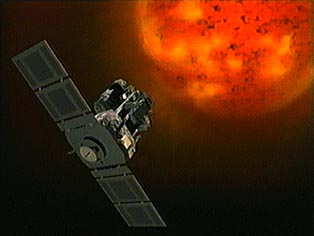|
|
For a few minutes during a total solar eclipse, when the disk of the moon slides precisely between our planet and the sun, we'll glimpse a sight seldom seen: the sun's hot, churning atmosphere, called the corona. Unless light from the sun is blocked, the corona is usually too dim for us to see from earth. During an eclipse, we'll have a better view of the lower corona than even space telescopes can provide.
These violent solar explosions are called Coronal Mass Ejections, or CMEs. When CMEs are directed toward the earth, turbulent shock waves of charged gas and their accompanying magnetic fields can interfere with radio, television, and telephone signals, damage satellites and disrupt satellite communications, and build up voltages in electric power lines. High-energy particles from these storms also contribute to the beautiful polar light shows known as aurora borealis (in the northern hemisphere) and aurora australis (in the southern hemisphere). The most violent solar storms can threaten the safety of space-walking astronauts and generate huge geomagnetic storms on the earth. A direct hit by a CME in 1989 knocked out power to Quebec and produced significant damage in satellites orbiting the earth. In 1977, a CME knocked out a communications satellite and silenced pagers all over the world. |

|

|

|
